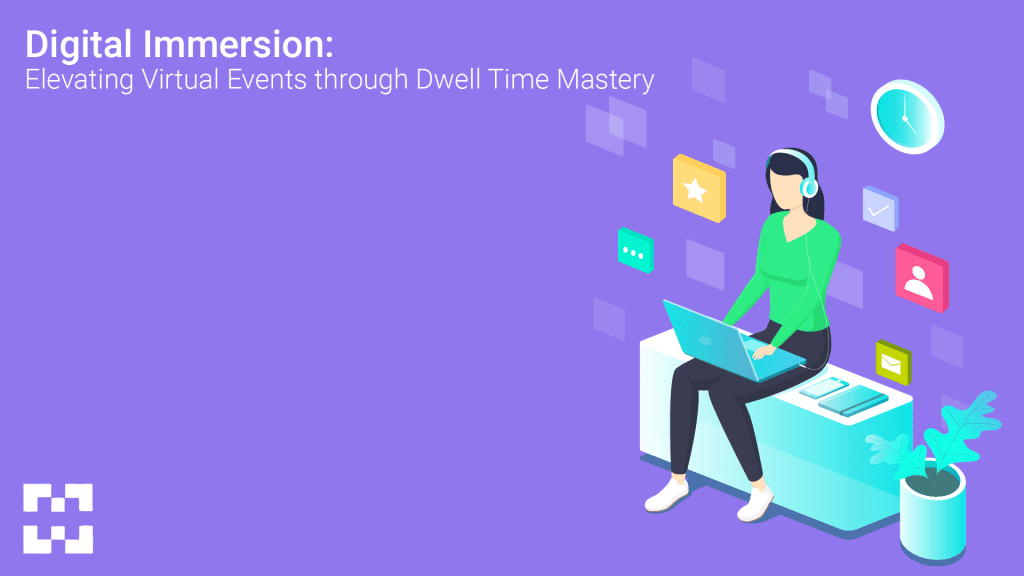
In the rapidly evolving landscape of events, the virtual realm has become the new frontier, offering unparalleled opportunities for connection and engagement. As we navigate this digital shift, the metrics we use to measure success must evolve as well. One metric that has emerged as a key indicator of success in virtual events is dwell time – the amount of time participants actively engage with the event content. In this blog, we delve into why dwell time is pivotal and explore how it has become a key KPI for the success of virtual events.
Understanding Dwell Time in Virtual Events
Before we delve into its significance, let’s grasp the concept of dwell time. In the virtual event sphere, dwell time represents the duration an attendee spends actively participating in the event. This includes watching presentations, engaging in discussions, networking, and interacting with event features. Unlike traditional in-person events where physical presence is a given, virtual events require intentional and sustained engagement to be deemed successful.
Dwell Time as a Key KPI
Dwell time stands out as a crucial Key Performance Indicator for virtual events for several reasons. Unlike metrics such as attendance numbers or click-through rates, dwell time provides a more nuanced understanding of participant engagement. It goes beyond mere participation and indicates the depth of interaction and interest.
As virtual events aim to replicate the immersive experience of in-person gatherings, the quality of engagement becomes paramount. Higher dwell times correlate with increased participant satisfaction, a deeper connection to the content, and a greater likelihood of continued participation in future events.
Factors Influencing Dwell Time
Several factors contribute to the overall dwell time of virtual events. Event organizers must carefully curate content, ensuring it is not only relevant but also captivating. Engaging speakers, thought-provoking discussions, and interactive elements all play a role in keeping participants invested in the event.
1. High-Quality and Relevant Content:
Content is the backbone of any event. Ensure that presentations are well-prepared, informative, and tailored to the audience’s interests.
Diversify content formats to cater to different learning preferences, including presentations, panel discussions, and interactive workshops.
2. Interactive Features:
Q&A sessions, polls, and live chat features can transform a passive viewing experience into an interactive and dynamic one.
Encourage participants to ask questions and share their thoughts, creating a sense of community and active involvement.
3. Networking Opportunities:
Virtual events should facilitate networking in creative ways. Virtual lounges, one-on-one video chats, and virtual coffee breaks can simulate the networking experience of in-person events.
Enhancing Virtual Event Content
To optimize dwell time, organizers must prioritize the creation of engaging and valuable content. This involves meticulous planning and a deep understanding of the audience’s needs and expectations.
1. Tailor Content to Your Audience:
Conduct pre-event surveys to understand participant expectations and tailor the content accordingly.
Address pain points and provide solutions through your content to keep participants engaged.
2. Incorporate Interactive Elements:
Use live polls, quizzes, and interactive elements to break the monotony and encourage active participation.
Leverage technology to create virtual environments that simulate real-world interactions.
3. Foster Audience Interaction:
Encourage participants to share their thoughts and questions throughout the event.
Create designated time slots for open discussions, allowing attendees to express their opinions and engage with the content.
Measuring and Analyzing Dwell Time
Accurately measuring dwell time is essential for understanding the effectiveness of your virtual event. Utilize analytics tools to gain insights into participant behavior and identify areas for improvement.
1. Implement Robust Analytics Tools:
Choose analytics tools that provide detailed insights into participant actions, such as which sessions they attended, how long they engaged with each session, and their overall journey through the event.
Regularly analyze this data to identify trends and patterns, helping you make informed decisions for future events.
2. Feedback Loops:
Collect feedback from participants regarding their experience and the content provided.
Use this feedback to make data-driven improvements for future events, ensuring that each iteration is more engaging than the last.
Case Studies: Learning from Success Stories
Let’s explore a couple of virtual events that have successfully optimized dwell time, providing valuable lessons for event organizers.
1. [Event Name]:
Discuss how this event utilized interactive features, engaging content, and networking opportunities to achieve an impressive dwell time.
Highlight specific strategies and innovations that contributed to the event’s success.
2. [Another Event]:
Provide a contrasting example, showcasing different approaches to increasing dwell time.
Analyze the specific challenges faced by this event and how they were overcome.
The Impact on ROI
Connect the dots between dwell time and Return on Investment (ROI). A higher dwell time not only indicates participant satisfaction but also increases the likelihood of future participation. This can lead to a positive impact on the overall ROI of virtual events.
1. Participant Satisfaction:
Emphasize how a satisfying and engaging experience contributes to participant retention and loyalty.
Happy participants are more likely to recommend the event to others, expanding the potential audience for future events.
2. Continued Participation:
A positive correlation exists between high dwell time and continued participation in subsequent events.
Showcase statistics or testimonials that demonstrate how participants who spent more time in one event were more likely to attend future events.
Conclusion: Prioritizing Dwell Time for Success
In conclusion, dwell time has emerged as a vital metric for measuring the success of virtual events. Event organizers must recognize its importance and implement strategies to enhance participant engagement. By focusing on high-quality content, interactive features, and networking opportunities, organizers can create virtual events that captivate audiences and leave a lasting impression. As the virtual event landscape continues to evolve, prioritizing dwell time will be key to unlocking success and delivering unparalleled experiences for participants.





